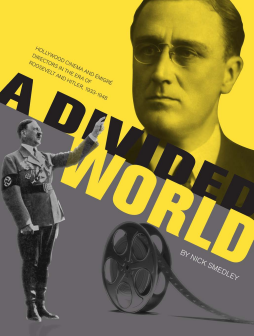
Additional Information
Book Details
Abstract
Roosevelt’s New Deal introduced sweeping social, political and cultural change across the United States, which the Hollywood film community embraced enthusiastically. When the heady idealism of the 1930s was replaced by the paranoia and fear of the post-war years, Hollywood became an easy target for the anti-communists. A Divided World examines some of the important programs of the New Deal and the subsequent response of the Hollywood film community - especially in relation to social welfare, women’s rights and international affairs. The book then charts what happened in Hollywood when the mood turned sour as the Cold War set in. A Divided World also provides in-depth analysis of the major works of three European directors in particular - Billy Wilder, Ernst Lubitsch, and Fritz Lang. The contributions of these three are compared and contrasted with the products of mainstream Hollywood. The author utilizes extensive new archival material to shed light on the production histories of the emigres' films. This is a new interpretation of an influential period in American film history and it is sure to generate debate and further scholarship.
Table of Contents
| Section Title | Page | Action | Price |
|---|---|---|---|
| Front Cover | FC | ||
| Preliminary Page | 1 | ||
| Contents | 5 | ||
| Introduction | 7 | ||
| Chapter 1: Once Upon a Time in America: American Society and Culture, 1933–1948 | 17 | ||
| Chapter 2: The Keeper of the Flame: Hollywood and the Cinema of Liberal Idealism | 45 | ||
| Chapter 3: Trouble in Paradise: Hollywood Films and American Social Change | 67 | ||
| Case Study 1: ‘Everything That Happens Must Be Strictly American’: Fritz Lang and Hollywood Idealism | 88 | ||
| Case Study 2: Sex, Violence and Alcohol: Billy Wilder in the 1940s | 121 | ||
| Chapter 4: The Devil is a Woman: Hollywood Films and the American Woman | 137 | ||
| Case Study 3: ‘Definitely Bawdy and Offensively Suggestive’: Lubitsch and the American Woman | 155 | ||
| Case Study 4: ‘Love Cures the Wounds it Makes’: Lang and Wilder: Conventional Portraits of the American Woman | 186 | ||
| Chapter 5 The World Changes: Hollywood and International Affairs | 195 | ||
| Case Study 5: ‘World Political Theater’: Lubitsch and Foreign Affairs | 205 | ||
| Case Study 6: ‘As Corruptible as the Others’: Wilder on America and Europe | 216 | ||
| Case Study 7: ‘Propaganda Can be Art’: Lang and International Affairs | 225 | ||
| Conclusion | 245 | ||
| Bibliography | 249 | ||
| Index | 269 | ||
| Back Cover | BC |
